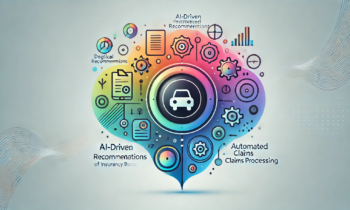Introduction
Cloud Computing is the practice of using a network of remote servers hosted on the Internet to store, manage, and process data, rather than a local server or a personal computer.
Cloud computing is a model for enabling ubiquitous, convenient, on-demand network access to a shared pool of configurable computing resources (e.g., networks, servers, storage, applications, and services). This technology allows enterprises to get their applications up and running quickly with minimal effort and provides users with self-service access to a catalog of IT resources.
For more reference Click Here!
Cloud computing refers to an IT service delivery model that allows third-party providers to provide computing resources and software tools via the Internet. Enterprises can use cloud computing to store, manage and process their critical data. Cloud computing is driven by several factors, such as an increasing number of websites and mobile applications that generate data, a growing focus on customer-centric apps for driving customer satisfaction, and the increasing need to control Capital Expenditure, Operational Expenditure, and Reduce Capital Expenditure.
The introduction of new technologies, such as Artificial Intelligence and Machine Learning, enables cloud growth. Companies can tap into AI capabilities. The COVID-19 Pandemic is a major challenge to the global economy. Major factors like data security, faster Disaster Recovery(DR), and meeting compliance requirements are key drivers for market growth. Additionally, the adoption of machine learning and artificial intelligence (Al) will help increase computing technology’s overall value for businesses.
Large companies use multi-cloud to manage employees on multiple cloud-based platforms. The processing times for cloud-based apps, such as Gmail or Facebook, need to be shorter as they are more robust and adaptable.
Enterprises are concerned about hosting data on-premises and the maintenance and initial costs involved. Additional concerns include electricity costs, staff expense, downtime, and staff expenses. Cloud services offer the benefit to enterprises of the pay-as–you-go model. This allows them to pay for their cloud usage, which results in reduced costs.
These are the Key Developments
Amazon Web Services (AWS), which is part of a NZ$7.5billion investment strategy, announced plans to open the first New Zealand data center. The company intends to launch its Auckland datacenter by 2024. The company also plans to launch 24 more availability regions and eight additional areas of AWS in Australia, India. Indonesia. Spain. Switzerland.
Microsoft Cloud is a new offering of cloud services for Azure that targets specific industries. It will be available in three forms: Microsoft Cloud Financial Services, Microsoft Cloud Manufacturing and Microsoft Cloud Nonprofit.
The benefits of cloud computing
Cloud computing can save your business money. When you use cloud services, you don’t have to invest in and maintain your own servers and software. That means no upfront costs, and lower ongoing costs.
Cloud services are also more scalable than traditional on-premises software. You can quickly add or remove users as your needs change, without having to make costly changes to your infrastructure.
And because cloud services are delivered over the Internet, they’re available from anywhere – so your employees can be productive no matter where they are.
The challenges of cloud computing
The cloud has been a game changer for the IT industry, but it has also brought with it a new set of challenges. One of the biggest challenges is security. With data being stored off-site and accessed via the internet, there is a greater risk of data breaches. Another challenge is reliability. Cloud services can be prone to outages, which can be frustrating for users who are reliant on them. And then there are the costs. Cloud services can be expensive, and businesses need to carefully consider their ROI before making the switch.
The future of cloud computing
Cloud computing has been around for a while now, and it’s no surprise that it’s here to stay. The future of cloud computing is looking bright, with more and more businesses and individuals using the cloud to store and access their data. Here are a few things to look forward to in the future of cloud computing:
1. Increased security: As more and more businesses move their data to the cloud, security concerns will continue to increase. However, the cloud is constantly evolving and becoming more secure. With the addition of new security features and technologies, the cloud will become even more secure in the future.
2. More reliable: One of the great things about the cloud is that it’s always backed up. This means that if something happens to your computer or device, your data will still be safe in the cloud.



